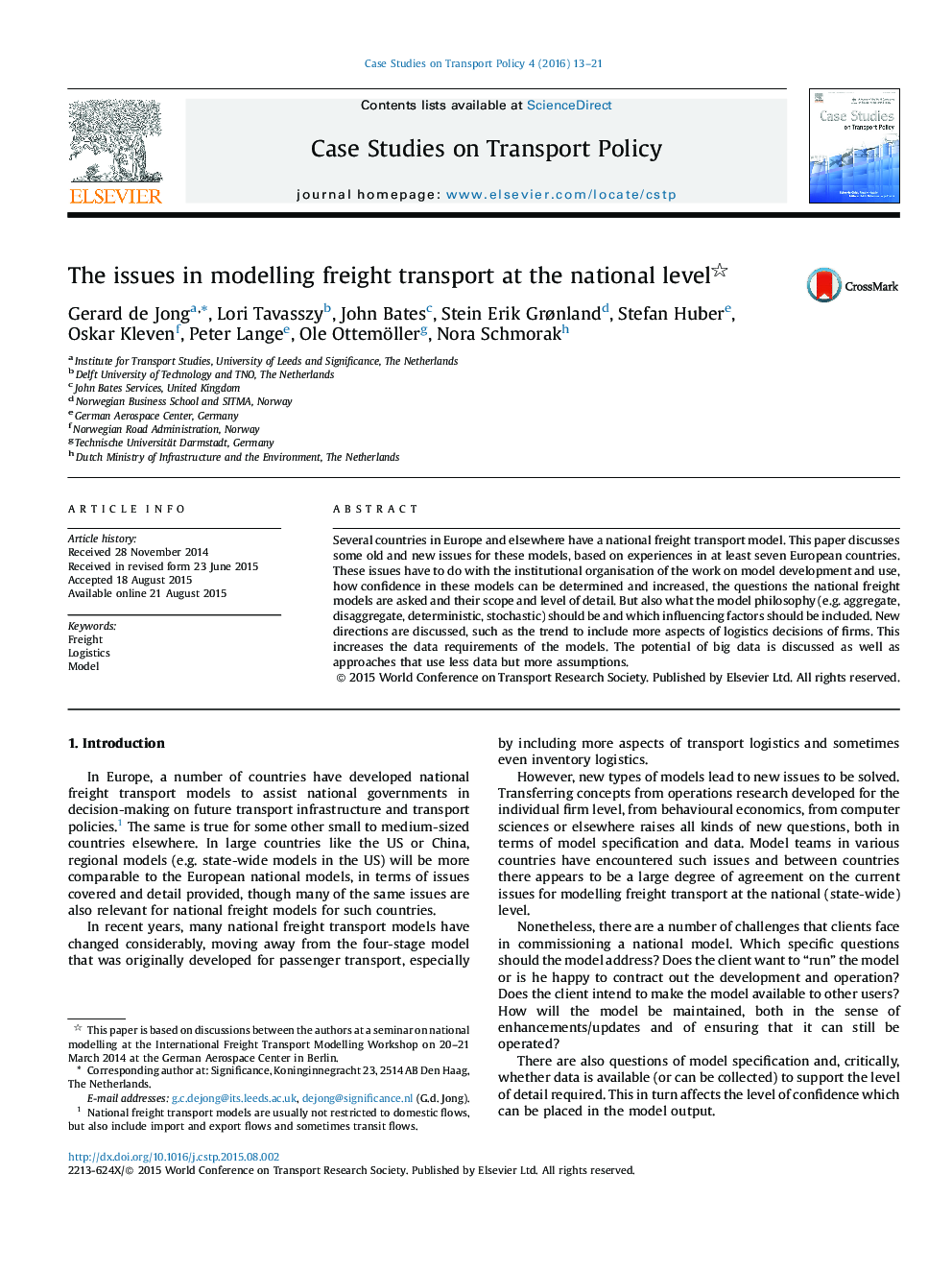| Article ID | Journal | Published Year | Pages | File Type |
|---|---|---|---|---|
| 250642 | Case Studies on Transport Policy | 2016 | 9 Pages |
•Discusses of a broad set of issues for national freight transport models, based on experiences in at least seven European countries.•Multi-purpose (but not all-purpose) models as well as single-issue models can be quite successful; critical success factors are user involvement at an early stage and clear and stable ownership structure.•Discussion of emerging trends in freight transport modelling, including the shift towards logistics models, and their impact on data requirements.•Identification of possible solutions (data fusion including big data and interview surveys; simulated behaviour of agents) to the data problems.•We discuss requirements and emerging techniques for applications of national models in “living lab” situations.
Several countries in Europe and elsewhere have a national freight transport model. This paper discusses some old and new issues for these models, based on experiences in at least seven European countries. These issues have to do with the institutional organisation of the work on model development and use, how confidence in these models can be determined and increased, the questions the national freight models are asked and their scope and level of detail. But also what the model philosophy (e.g. aggregate, disaggregate, deterministic, stochastic) should be and which influencing factors should be included. New directions are discussed, such as the trend to include more aspects of logistics decisions of firms. This increases the data requirements of the models. The potential of big data is discussed as well as approaches that use less data but more assumptions.
